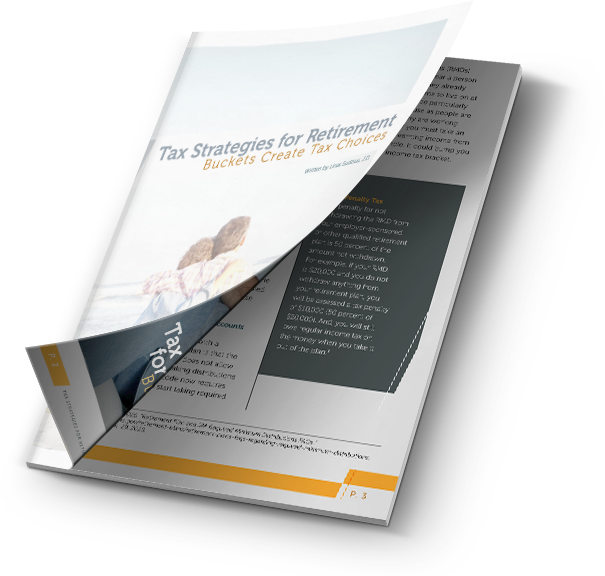Cracking the Nest Egg: When Accumulation Becomes Distribution
Throughout your working life, I am sure that you have been saving as much possible into IRA’s, 401(k)’s, and investment accounts to save for retirement. During the accumulation phase, you save, and hopefully maximize total returns on all accounts. Your ultimate goal would be to have a large enough “nest egg” to support you and your family and fund your lifestyle for the rest of your life after your working years. Though many may stress about the accumulation process, and if they have enough saved come retirement, the bigger pressures may come at distribution. How will you distribute the funds? Which accounts should you “crack” first? How often do you need funds? What are your potential tax consequences from these distributions? At the time of retirement, the ultimate goal is now to provide enough income to meet lifestyle needs and to allow the nest egg to diminish (as it must naturally) without letting it disappear. Entering retirement with a solid plan is something that we should all look forward to. Let’s take a closer look at some easy mistakes retirees can make, and how to avoid them by having a strategic plan in place.
Beware of Costly Distribution Mistakes
Compounding (in reverse):
Compounding, at its surface, is usually a good thing. The earlier you start saving, the earlier your investment will build into something greater than if you had started to save later. This also works when determining withdrawal rates: taking out too much too soon will diminish the impact of compounding on the remaining assets. Remember that the shorter the money stays invested, the less it will grow. This idea may sound simplistic, however those taking a rate of withdrawal that is too great without their knowledge usually do not realize until it is too late, and their nest egg is near diminished.
Dollar Cost Averaging (in reverse):
As investing naturally works, investing a fixed dollar amount during volatile markets allows you to buy more shares when prices are low (buy low, sell high). This Is a good thing. But, let’s say you withdraw a fixed dollar amount from a volatile portfolio. Now you may have done serious damage, because more shares must be liquidated to provide the same about of cash, as you are selling at a lower price. Again, a simple description of a costly mistake, that many do not realize until it is too late to fix.
The above only illustrates a few examples of potential mistakes. Part of transitioning into retirement is learning the fundamental concepts related to managing your nest egg, such as the dangers of volatility, excessive withdrawals, longer withdrawal period than expected, among others which can undo a lifetime of meticulous saving.
Income Planning Strategies
There are many ways to approach retirement, and there are different strategies that are more appropriate for some than others. Some choose to “live off interest” while others set up a withdrawal plan at a specified rate, both of which are viable options. The classic strategy is to shift from a growth-oriented portfolio to investments that generate income, including bonds and stocks. Your income consists of the actual payments thrown off by the investments. Any assets not needed for current income generating may be invested in equities for inflation protection and long-term growth.
Another common, more constant approach is to set up a withdrawal plan. Say you plan on withdrawing 4% of your account balances per year, each subsequent withdrawal increasing by the inflation rate. Under the 4% rule, the assets are invested in a diversified portfolio of stocks and bonds.
These strategies, however, differ depending on whether you are distributing from a taxable or nontaxable account. For example, if you want tax-free income from a taxable account, you can buy municipal bonds. If you want tax-free income at retirement from an IRA, you could convert to a Roth IRA (which you would pay taxes on at time of conversion). By retirement, you will probably have multiple accounts. When considering distributions, look at your nest egg overall, and determine how you will start to use these accounts to your advantage.
Impact of IRA Withdrawals
If you will plan to use IRAs in your retirement planning, you will need to consider the current, and future, tax impacts of these withdrawals. This could take planning years ahead of distribution. It may not make sense to defer distributions for traditional IRAs until the last possible moment if doing so might create such a large required minimum distribution placing you in a higher tax bracket.
Once you start the distribution phase, your accounts require much closer attention. Not only must you invest the assets in a prudent manner, you also must watch the amount, and timing of the distributions to ensure the funds last. Retirement is something that we all want to enter with a solid plan. It is a big transition when you leave the workforce to live off your savings and requires an attitude adjustment in both you and your advisor. Transitioning into retirement stress-free is something you should look forward to, after all, you have been working for this your entire life
Ready to Take The Next Step?
For more information about any of the products and services listed here, schedule a meeting today or register to attend a seminar.


 Instantly download this 10-page guide to discover:
Instantly download this 10-page guide to discover: